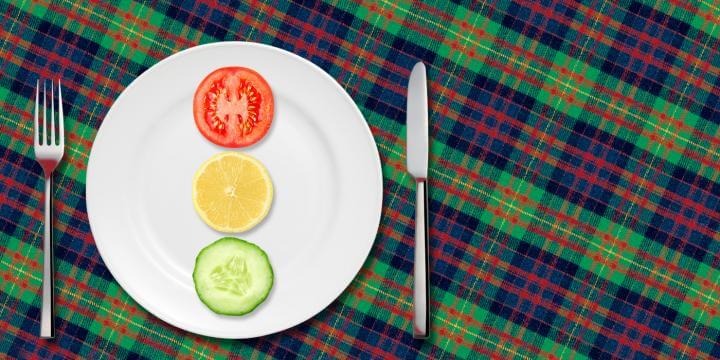Menu labels have become a favorite tool for policymakers to fight obesity, despite a lack of evidence that the format encourages people to make healthier food choices.
However, new research from Carnegie Mellon University and the University of Pennsylvania shows that “traffic light” color-coded labels, numeric labels and a combination of the two reduce the number of calories ordered in online food orders by about 10 percent. Published in the Journal of Public Policy & Marketing, the results from the study — the first online food ordering field experiment — suggest that consumers benefit from easier to understand information about what is, and isn’t, a healthy food choice.
“We are looking for more and better ways to help people make decisions about the food that they eat, to help them better understand the nutritional content so that they can use that information when they make choices,” said Julie Downs, associate professor of social and decision sciences at CMU.
For the study, 249 employees at a large corporation ordered lunches through a website designed by the research team. The menus each had numeric calorie labels, traffic light labels, both kinds of labels or no nutritional information.
The researchers compared the calorie content of the ordered lunches and found that each label reduced the calories ordered by 10 percent.
“Calorie labeling appears to be effective in an online environment where consumers have fewer distractions, and the simpler traffic-light labeling seems as effective as standard calorie numbers,” said Eric M. Van Epps, a 2015 CMU alumnus who is a postdoctoral researcher at the University of Pennsylvania’s Perelman School of Medicine. Epps worked on the research while pursuing his Ph.D. in behavioral decision research at CMU.
The results also indicated that traffic light labels were effective without standard calorie number information, and there was no benefit from combining the two types of labels.
“The jury is still out on whether calorie labeling is an effective policy for reducing calorie intake,” said George Loewenstein, the Herbert A. Simon University Professor of Economics and Psychology in the Dietrich College of Humanities and Social Sciences. “We still don’t know whether it will be more or less effective when the information has become ubiquitous and expected. And, we also don’t know whether people who cut back on calories in a meal will compensate in ways that offset the benefit, for example by being more likely to snack or less likely to exercise, later in the day.”
“We still don’t know whether the information will be more or less effective when the information has become ubiquitous and expected. And, we also don’t know whether people who cut back on calories in a meal will compensate in ways that offset the benefit, for example by being more likely to snack or less likely to exercise, later in the day,” Loewenstein said.


